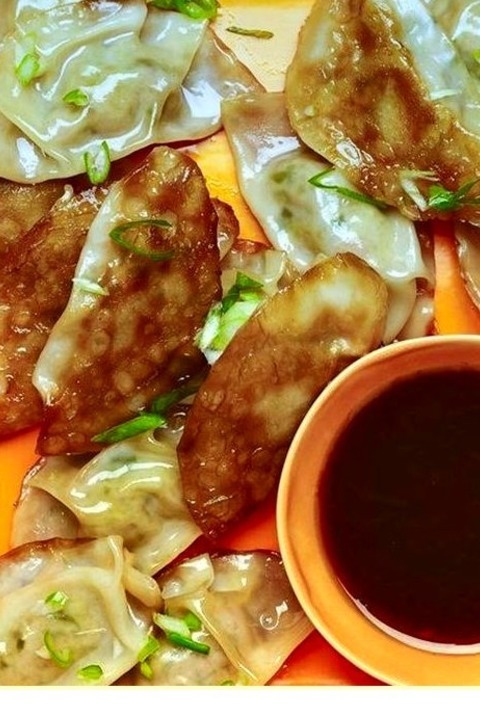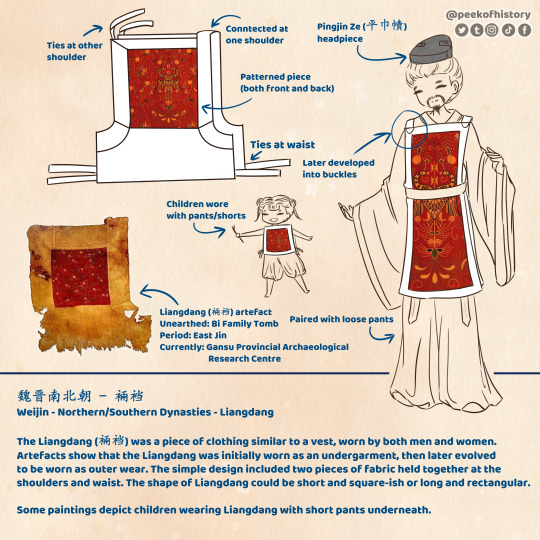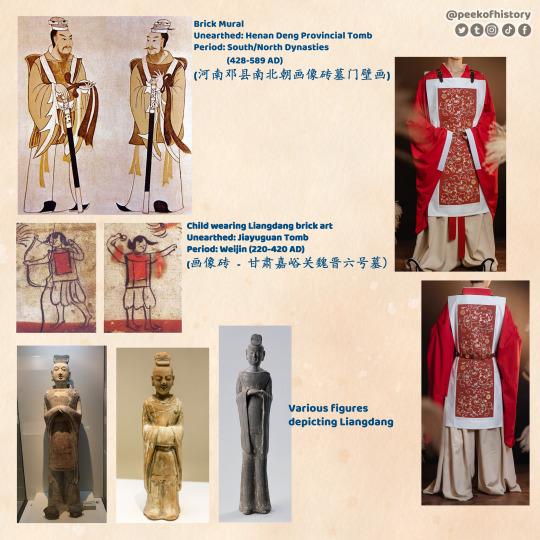#Northern China
Explore tagged Tumblr posts
Text









Shaanxi cuisine 陕西菜, or Qin cuisine 秦菜, is derived from the native cooking styles of Shaanxi province, which has a population of 39 million, and where the capital of several dynasties Chang’an (Xi’an) is.
Shaanxi cuisine is characterized by its noodles, lamb/mutton dishes, and heavy use of garlic, onion and vinegar. The province’s cuisine has many Islamic/halal influences because of the Muslim population there, which dates back centuries ago.
Many different types of meat are used in Shaanxi cuisine such as duck, lamb, chicken, and beef, with many vegetarian dishes.
(examples are: 𰻝𰻝面, 锅盔, 羊肉泡馍, 腊牛羊肉, 水盆羊肉, 肉夹馍, 白吉馍, 菠菜面, 臊子面)
#china#chinese cuisine#Chinese culinary#Chinese food#Food#Shaanxi#shaanxi province#xi’an#chang’an#cuisine#Northern China#North China#🇨🇳#chinese#chinese heritage#chinese culture#east asia#people’s republic of china#prc#han Chinese#sino#hui Chinese#northwestern China#northwest China#halal Chinese food#Chinese Islamic cuisine#Chinese Islamic food#noodles#chinese noodles#bread
3 notes
·
View notes
Text
There are places in the world, such as parts of the Indo-Gangetic plain of South Asia and the Yellow River watershed of Northern China, where extraction, principally for irrigation, far exceeds recharge.
"Environmental Chemistry: A Global Perspective", 4e - Gary W. VanLoon & Stephen J. Duffy
#book quote#environmental chemistry#nonfiction#textbook#indo gangetic plain#south asia#yellow river#watershed#northern china#extraction#irrigation#agriculture#recharge
0 notes
Text
In the ruins of northern China in the 380s the Xianbei set up their own state, called Northern Wei.*
*Once again, the terminology is confusing. The Xianbei borrowed their name from the ancient kingdom of Wei (445-225 BCE) mentioned in Chapter 5. To distinguish the Xianbei state from the earlier kingdom, some historians call it Tuoba Wei (named after the Xianbei clan that ran the state); others prefer Northern Wei, the usage I follow here.
"Why the West Rules – For Now: The patterns of history and what they reveal about the future" - Ian Morris
#book quotes#why the west rules – for now#ian morris#nonfiction#ruins#northern china#4th century#xianbei#northern wei#tuoba wei#chinese history
1 note
·
View note
Photo

Vegetable Salad - Tiger Salad This salad hails from Northern China and is becoming more well-known in the US. Add some protein by incorporating peanuts, shrimp, or tofu.
0 notes
Photo

Pot Stickers Traditional Northern China is the region where this traditional recipe is from. Wonton wrappers are filled with pork and vegetables that have been finely chopped, then fried and served with a hot dipping sauce.
0 notes
Photo

Tiger Salad This salad hails from Northern China and is becoming more well-known in the US. Add some protein by incorporating peanuts, shrimp, or tofu.
0 notes
Photo

Recipe for Tiger Salad This is a popular salad from Northern China that's gaining popularity in the United States. Toss in peanuts, shrimp, or tofu for some protein. 3 large green onions white and tender green parts only, 2 cups chopped fresh cilantro leaves and stems, 1.25 teaspoons salt divided, 2 tablespoons unseasoned rice vinegar, 1.5 tablespoons toasted sesame oil, 1/4 teaspoon crushed red pepper flakes, 1 large red bell pepper, 1/2 English cucumber, 1 large green bell pepper
0 notes
Photo

Tiger Salad This salad hails from Northern China and is becoming more well-known in the US. Add some protein by incorporating peanuts, shrimp, or tofu.
0 notes
Text


I don't often see this article of clothing depicted when discussing Hanfu, but this is a Liangdang (裲裆). It's essentially an early vest. Historians speculate that it was initially worn on the inside as an undergarment, then gradually people started wearing it on the outside as well. The size and shape of it also changed from being small and square-ish to long enough to reach knee-length.
I feel like this would be a fun and cute Hanfu outfit to throw together for a day out. Since it's usually worn with pants, it's easier to walk around. I think it's also a piece that can be incorporated into modern-day wear too, through some shorts on, a pair of sneakers, and you're good to go :D
(A friend suggested I include a comparison to other civilizations' history when discussing Chinese Dynasties. She said when her European friends taught her history, she found it easier to relate it to Chinese Dynasties since she was more familiar with that. Below the cut, there's a chart where I compiled Chinese, Egyptian, Greek, and British History into a timeline, hopefully it helps a little.)




#hanfu#汉服#china#中国#chinese hanfu#culture#history#fashion#clothing#historical clothing#魏晋南北朝#裲裆#weijin#southern northern dynasties#liangdang
234 notes
·
View notes
Text
Grandma's underground secret courtyard (nainai's underground beautiful chinese yuanzi) by 杨道友的探索旅行
#china#video#xhs#douyin#aesthetics#it's northern chinese style#soothing music#chinese countryside#architecture
946 notes
·
View notes
Text
April 13, Xi'an, China, Shaanxi Archaeology Museum/陕西考古博物馆 (Part 3 - Qin dynasty to Sui dynasty):
First up is one of many bronze edict tablets of the 2nd emperor of Qin dynasty, made in 209 BC. Inscribed upon it in Seal script is one of two edicts, specifically the one from the 2nd emperor of Qin dynasty (秦二世), which basically is a continuation of Qin Shi Huang's edict on standardizing all weights and measurements. Here Qin Shi Huang/秦始皇 is referred to as Shi Huangdi/始皇帝, where shi/始 means "origin", and huangdi/皇帝 means "emperor".

^The edict inscribed is as follows (this is my VERY rough translation, please take this with a grain of salt, I'm not great at reading Old Chinese; original text is on bottom right of picture):
“First year (209 BC; first year of 2nd Emperor of Qin's reign), [We] issued an edict to chancellors Li Si and Feng Quji: Shi Huangdi pioneered this effort to standardize all weights and measurements, since then all such edicts have been inscribed on bronze. Now that [We have] inherited this Huangdi title, [We] shall not refer to Ourselves as Shi Huangdi here. Likewise, should Our descendants continue to produce tablets of Shi Huangdi's edict, they shall not take credit for Shi Huangdi's achievements. [We] hereby inscribe this edict on the left, so that all may be clear."
Ever since Qin Shi Huang tried to standardize systems of measurements for the entire country, every dynasty since Qin dynasty has also done the same. These are the standardized weights and volume measurements (all made with bronze) from Western Han dynasty (202 - 8 BC). Those volume measurement tools are very much like oversized measurement spoons, since they are mostly used to measure liquids and grains (in ancient China grains can be measured by volume).

Looks like I forgot about this one in part 2, this is a bronze sword from Warring States period (475 - 221 BC), I believe. It's decorated with carved pieces of jade (some are on the scabbard, but the scabbard has presumably decomposed over time):

The painted and carved stone doorway to a Eastern Han dynasty (25 - 220 AD) tomb. The actual (double) doors are in the middle, and the pieces around them are the side jambs and the lintel. Note the animals, mythical creatures, and humans depicted. On the double doors, in order from top to bottom, there's a pair of Zhuque/朱雀/Vermilion Bird, a pair of symbolic door knockers shaped like a beast carrying a ring in its mouth, and a pair of oxen. On the top right and top left of the lintel piece, you can also clearly see the sun crow and the moon toad, respectively.

The layout of some Western Han dynasty (202 - 8 BC) mausoleums. Note that the "pyramids" on the model aren't stone pyramids like the Great Pyramid of Giza, they are actually fengtu/封土, or artificial mounds of earth on top of the actual tomb to symbolically seal the tomb (feng/封 means "seal" or "to seal"), and can serve as tomb markers. Fengtu can differ vastly in size according to the social status of the deceased, so the fengtu of imperial tombs are usually huge, some so big that they are like small hills. However, while Western Han dynasty imperial tombs have these square-ish fengtu mounds, in Eastern Han dynasty (25 - 220 AD) the fengtu mounds became circular, and imperial tomb fengtu have been circular pretty much ever since. But fengtu wasn't just reserved for the elites, common folk also built small circular fengtu mounds on top of graves (these graves are called fen/坟; graves without fengtu are called mu/墓), and this is still practiced today, albeit much more common in rural areas since there are less people and more land. When people tend to the graves of their family members and ancestors on Qingming Festival, if the grave is a fen grave, people would pile more earth on the fengtu to make it rounder as part of the upkeep process.

A set of pottery figurines of entertainers from a Western Han era tomb. I love how they set the display up here, you can practically imagine the music and the dancing

More pottery figurines from Western Han era tombs

Western Han era hollow clay bricks depicting the Four Symbols/四象 of the cardinal directions: Qinglong/青龙/Azure Dragon of the East, Zhuque/朱雀/Vermilion Bird of the South, Xuanwu/玄武/Black Tortoise of the North, and Baihu/白虎/White Tiger of the West.

Left: a piece of intricately painted lacquered wood, I forgot where it's from but it was probably a piece of decoration on a larger artifact. Right: a piece of gold decoration inlaid with turquoise from Western Han era


The biggest decorated yubi/玉璧 (jade disc with hole in the middle) found so far, from an early Western Han dynasty tomb. Its diameter is 43.2 cm (~17 inches). If you zoom in, the inner band is decorated with these almost tadpole-like little swirls, and these are called gu pattern/谷纹, since they might represent sprouting rice kernels. The outer band is decorated with 4 sets of kuilong patterns/夔龙纹 and 4 sets of dragon-phoenix patterns/龙凤纹. It's speculated that the patterns here together depict the universe, and the hole in the middle is where the spirit of the deceased will travel through. This particular yubi also has 六百六十一 ("six hundred and sixty-one") carved discreetly on the side, presumably a "serial number" left by the artisan who crafted this piece.

Decorated backs of bronze mirrors. I didn't take a picture of the plaque so I'm unclear on what time period these are from (may or may not be from the time period indicated at the beginning of the post):

Left: a hand-held incense burner. Right: a particular type of incense burner called a boshanlu/博山炉, so named because the lid was made to look like a mini mountain


Various Northern Zhou dynasty (557 - 581 AD) painted pottery figurines. Below middle arranged in a circle is the metal pieces on a belt.

Sixteen Kingoms era pottery entertainer figurines:

#2024 china#xi'an#china#shaanxi archaeology museum#chinese history#chinese culture#qin dynasty#han dynasty#northern zhou dynasty#sixteen kingdoms period#archaeology#history#culture
226 notes
·
View notes
Text
Kaifeng was apparently entering an ecological bottleneck.
"Why the West Rules – For Now: The patterns of history and what they reveal about the future" - Ian Morris
#book quote#why the west rules – for now#ian morris#nonfiction#kaifeng#bottleneck#northern china#chinese history
0 notes
Text








Shuanglin Temple 双林寺 is a 6th century Buddhist temple in Shanxi province, China.
It’s a UNESCO World Heritage site, and is protected by the state administration.
The temple was featured in the 2024 game “Black Myth: Wukong”
#china#chinese architecture#chinese#🇨🇳#chinese heritage#han chinese#Buddhism#chinese buddhism#Buddhist temple#chinese temple#Buddha#sun wukong#black myth wukong#Shanxi#northern qi dynasty#northern qi#journey to the West#jttw#east asia
130 notes
·
View notes
Text
[China Makeup history]The production of concealer powder for women in the Northern Wei Dynasty(386–535)of China 1,500 years ago
The author's experience of the production process is as follows:
1.Concealer powder for women in the Northern Wei Dynasty. After experiencing the entire production process, my first impression: the rice soaked for more than 20 days is really smelly! like the biological weapon my painful expression doesn't require any acting skills, but the rice soaked for many days is very soft and sticky, and it is very convenient to rub or grind it by hand (Women with no strength like me can quickly grind it into pulp in 5 minutes)
2.The process is complicated and the production takes more than 30 days. The resulting "rice powder" is indeed delicate. Although its adhesion cannot compare with today's cosmetics, it is still very good as a basic makeup powder for women more than a thousand years ago.
————————
🧚🏻Production & Model/Makeup:@曾嚼子
🔗 Xiaohongshu:http://xhslink.com/uc8W4S
————————
#chinese hanfu#Northern Wei Dynasty(386–535)#China Makeup history#hanfu#hanfu accessories#chinese traditional clothing#hanfu_challenge#china#chinese#cosmetics#historical makeup#historical fashion#曾嚼子#Concealer powder#漢服#汉服#中華風
219 notes
·
View notes
Text









Relic Prohibited From Displaying Abroad: Northern Wei Dynasty Painting
Painted screen covered with vermilion lacquer from the tomb of Sima Jinlong (司馬金龍).
The outlines are finely drawn in black ink. A dazzling riot of colors distinguishes this specimen from those of previous centuries.
The painting illustrates narratives about female virtues and filial piety from Han dynasty Liu Xiang's (劉向) Confucian classic “Biography of Exemplary Women” (列女傳).
The top section from the well-preserved part in the photo depicts Emperor Shun's story of filial piety.
The second represents Three Queens of Zhou dynasty – Tai Jiang, Tai Ren and Tai Shi – exemplary mothers and wives (whose historicity remains in doubt) included in later collections of moral precepts.
The third section portrays Lushi Chunjiang and Chunjiang’s daughter.
The bottom one illustrates the episode when the Consort Ban (班婕妤) refused to accompany the emperor in a palanquin so as not to distract him from the thoughts about the state welfare.
The screen was unearthed in Shijiazhai (石家寨) village, Datong, Shanxi in 1965. It is surprising that many precious artifacts remained in the burial pit, despite repeated plundering. We can chalk it up to the ignorance of the thieves.
The board is 82 cm long, 40 cm wide and 2.5 cm thick. The two pieces of the lacquer-painted screen are connected by mortise and tenon joint.
Due to its exceptional fragility and value, the panel is not allowed to be exhibited abroad. Despite all the museum care, the second part of the diptych is not so well-preserved. The tomb has been repeatedly flooded over the centuries, and the dampness has taken its toll. The vermilion screen is stored in Datong Museum (大同市博物館), Shanxi. The original is rare on display for several days only, the rest of the time it is replaced by a replica. Pictured is the original.
#ancient china#chinese culture#chinese art#chinese history#chinese painting#painting miniatures#painting on wood#Northern Wei dynasty#lacquer#lacquerware#ancient tomb#tomb art#vermilion#artifact#unique#relic#han dynasty#burial site#burial#chinese customs
69 notes
·
View notes
